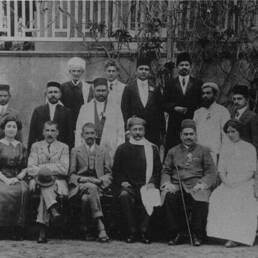Asafoetida, once produced only in the Middle East, is now a staple spice ingredient used in almost every Indian household. You may know it by its other name – ‘hing.’ But how the spice transformed into its modern avatar is quite a remarkable story.
If we are talking about ‘hing,’ how can we not talk about its enticing aroma that envelopes every other Indian street corner on bustling mornings? The smell of ‘hing’ kachoris alone is sufficient to captivate anyone, not to mention their lip-smacking taste.
The kachoris are made with a pinch of ‘hing’ powder that is today readily available in the market. However, this was always not the case.
Prior to 1978, women across households would have to dry and grind lumps of hing to achieve the fine, powdered texture – a tedious and time-consuming process indeed.
But all that changed in 1978 when a Gujarati gentleman came up with a remarkable innovation. Ajit Khimji Merchant and his company, Laljee Godhoo and Co., introduced a 50 gm bottle of compounded asafoetida to be used for household consumption.
This innovation, however, was many years in the making.

The Gujaratis have a long history with asafoetida. Being on the west coast with better trade access to Middle Eastern countries, Gujaratis have imported asafoetida for many years from countries like Iran and Afghanistan.
Over the years, asafoetida became a staple addition to traditional Gujarati cuisine, and the Merchant family was no different. But how did it evolve into a business?
It’s believed that sometime in the 1890s, Laljee Godhoo crossed paths with a kabuliwala who was selling lumps of asafoetida on the streets of Bombay. Godhoo sensed a business opportunity and after a few cases of trial and error, Laljee Godhoo and Co. was established in 1894.
Initially ‘lumps’ of hing were prepared manually. At the time it was probably the only company doing this kind of work. Sales were initially restricted to Bombay, but in time spread to Madras and other southern states.
Soon, demand picked up and branches were set up across Chennai, with orders coming in from all over the country. By the time Ajit Khimji Merchant came into the picture, LG & Co. held most of the market share. But competition was increasing by the day.
Despite the challenges, sales of LG & Co.’s powdered hing skyrocketed in a few years. By combining top quality raw materials with a meticulous production process, LG’s powdered hing became a landmark product.
Today, India consumes 40% of the world’s production of hing and a fair share of that goes through LG & Co. The sixth generation of the Merchant family is now running the business, still producing best-in-class and affordable products.
Sadly, we couldn’t find any photograph of the Merchant family’s visionary patriarch who scripted this incredible journey. Nonetheless, his legacy lives on.
So next time when you come across a small container with the name LG written on it, be rest assured it has nothing to do with the South Korean-based appliance giant, but is, in fact, the name of an Indian company which has been spicing up our palates since 1894.
Sources:
https://www.laljeegodhoo.com/company-profile/, Branded in History: Fresh Marketing Lessons From Vintage Brands by Ramya Ramamurthy (HACHETTE INDIA)
Image attributes:
Wiki Commons




